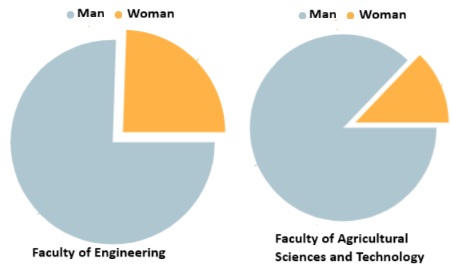Gender Distribution Analysis Across Faculties and Schools
As part of our institutional commitment to gender equality, inclusiveness, and evidence-based decision-making, the University systematically analyses and monitors student gender distribution across all faculties and schools on an annual basis. These data are used to identify representation trends, ensure equal access to education, and design targeted initiatives that support balanced participation across disciplines. Through this continuous monitoring, our University strives to foster an academic environment where both women and men are encouraged, supported, and empowered to pursue studies in their chosen fields.
Women-Dominated Faculties/Schools
Certain faculties and schools demonstrate a significantly higher enrolment of female students, reflecting national and global trends in education, health, and social-care-related disciplines. These include the Faculty of Dentistry, the Faculty of Arts & Sciences, and the Faculty of Health Sciences, particularly the School of Nursing. Female student preference in these fields aligns with broader societal patterns linked to caregiving professions and nurturing-oriented career pathways. The University continues to strengthen support systems, academic advising, and professional development opportunities for all students in these areas while encouraging more male participation through awareness activities and outreach.

Gender-Balanced Faculties
Several academic units display a balanced gender distribution, illustrating a healthy representation of both male and female students. Examples include the Faculty of Law, Faculty of Pharmacy and the Faculty of Communication. This balance highlights these fields as academically diverse and broadly appealing across genders. The University continues to support equity-based initiatives and career guidance programmes to maintain and enhance gender balance in these disciplines.

Male-Dominated Faculties
In contrast, faculties traditionally aligned with technology, innovation, and applied sciences—such as the Faculty of Engineering and the Faculty of Agricultural Sciences and Technologies—currently demonstrate higher male enrolment rates. To address this imbalance and encourage more women to enter STEM-related fields, the University has introduced dedicated scholarships, mentorship programmes, and outreach initiatives. These strategic actions aim to break gender stereotypes, increase female representation, and strengthen diversity in fields critical to national and global development.

